-
Posts
809 -
Joined
-
Last visited
Content Type
Profiles
Forums
Blogs
Gallery
Events
Store
Posts posted by Yankee
-
-
Congratulations on an amazing find
 . Can't be too many of those laying around. If any other plates please show.
. Can't be too many of those laying around. If any other plates please show.Thanks
Sincerely
Yankee
.
0 -
And now, I would like to add a full series of Austria's Goldene Tapferkeitsmedaillen, from the Holy Roman Emperor Joseph II to Karl I.
Those of Emperor Franz I appear in the two variations, engraved by Wirt and Harnisch; two variations of the Ferdinand type and, last but not least, the medal of Karl I is also in gold (the "K" ribbon badge is in gold too):
Absolutely Amazing

 even the ribbons are original.
even the ribbons are original.The complete run over three centuries. That must have been a long time in the making for you.
Thanks for showing.
0 -
Hello,
as promised, I would like to add the pictures of my 1st Class, officers' Militärdienstzeichen for 50 years service.
The piece is in gilt silver and black enamel; the suspension loop is struck with the "A"; "Windhundkpof" and "FR" marks, while the suspension ring is struck with the "Windhundkopf" and "FR" marks.
Obverse:
OUTSTANDING
 0
0 -
Vaclav Mericka is one of the world foremost phalerist and he and Baron von Prochadzka are rightfully considered first real research pioneers in phaleristics. His awesome collection was private one and he was in lively correspondence with many other phalerists of those times. He spoke many languages and moreover his wife was coming from wealthy aristocratic family so when he wanted something really precious he could afford it. Strange life for someone living behind Iron curtain but he made it out. He died in 2001 and because he didn’t have any successor he decided to give his whole collection as a gift to the National Museum in Prague. Unfortunately it was never presented to public. It has nothing to do with communist regime in Czechoslovakia before 1989.
Now, shame on me. MDZ I. class for 50 years latest version (1890-1918) was bestowed to 80 officers + Emperor FJI. There is an exhaustive list. Going back to silver/bronze issue. Best source of information is original Statute of particular decoration. It also states how such a decoration should be looking like and which material it was made of. MDZ II. a III. class are made of gilded bronze and MDZ I. class is made of gilded silver. That is sure. But the world is not black and white. Gilding on silver doesn’t have very long life span. Someone who is chemist here can surely explain it better but generally speaking gilding on silver is wiped out easily, just check out any private made silver decoration (EKO, FJO, LO). Moreover silver gets patina quickly and it leaves messy spots on the cloth. Military Merit Cross introduced in 1849 had plain reverse side without enamelling and officers had been using various techniques like gluing a piece of leather on reverse to avoid messing the uniform. That was a reason for enamelling the reverse side of MVK in the next decades to come.
Gilding in bronze is much better. It´s stable, cheap and reliable. In the list of 80 officers there is only one captain, few majors and not too many lieutenant-colonels and colonels. Like 65 others are generals of various ranks. Every officer had more than one uniform. General had to have many. It is also sure that he didn’t replace every morning all of his decorations from one uniform to another. All decoration had been usually sewed in. He needed more pieces than one. Bronze was cheaper and even better so his others MDZ I. class in gilded bronze had been purchased privately and used on his various uniforms.
MDZ I. class in gilded bronze doesn’t mean that it’s forgery. Not at all. If all signs are showing originality it´s OK but it is only so-called second piece. Of course there is a chance to put crown on the MDZ II. class but those crowns are not easy to find so if it is fake it´s usually cast. MDZ with dedication are unique in this sense. It´s private made piece for officer or non-commissioned officer from colleagues or subordinates. Every such a piece is a valuable asset to the collection.
How sad there was no stipulation in the donation of the collection to the National Museum that would have assured they be permanently displayed to the public. This does not guarantee there safekeeping in fact far from it. Not too long ago the American Numismatic Society sold off their entire foreign medal collection since that was not there main focus of interest. I'm not sure how the donors or heirs would have taken that. For the collector it was a windfall to obtain rare pieces that would otherwise been impossible to acquire. Perhaps there will be another windfall at the National Museum in Prague, why not if the collection never sees the light of day again.
Interesting that the MVK reverse was specifically designed not to stain the uniforms. The same can be said for the private purchase LS Decoration, some even made with exotic materials. The Novel Beyond Nationalism by Istvan Deak is The Social & Political History of the Habsburg Officer Corps from 1848-1918. There is a small section that goes into the costs involved being an officer, which the uniform itself was a fortune and for many they could not afford to replace it so easily. Fascinating the A-H was the only Empire where the officers had to know several languages to communicate with their men who were from other different speaking parts of the Empire. Thats pretty impressive considering there was no Roseta Stone. If I should ever have the good fortune to come across an early MVK with a leather patch will not disturb it. . Every now and then I see a star being offered with a leather backing. I suppose that too was done for the same purpose. Thanks for pointing out the gilding on bronze adheres better than silver. Now that would explain how a 3rd class private purchase LS Decoration had no trace of gilt. The one time owner believed it was never gilded in the first place. The Decoration had a very unique dedication. As described to me it had the recipients four colleagues named on each arm of the cross.
Sincerely
Yankee
0 -
I am glad that I could help but I have only shared the wisdom of others. Being honest I am mostly looking for publications and works of the authors of former AH territory like Austria, Hungary and Czech Republic. Some of the works, like Mericka´s Orden und Ehrenzeichen der Österreichisch-Ungarischen Monarchie is still great book even after 40 years since its publication. Some medium-decent knowledge of German in this particular area is more than welcomed.
Well, I wouldn’t say for 100% that there are only two official makers of MDZ II. and I. class but it´s also true that I have never seen anything else and I think that everyone of us have seen plenty of them. MDZ II. class (35/40 years) is made of gilded bronze but original piece of MDZ I. class (50 years) is made of gilded silver. Those are very rare and pricey, officially only 51 pieces bestowed, including Emperor Franz Josef I. MDZ I. class if made properly with all signs of originality but only in gilded bronze is original second piece (Zweit- oder Tragestück). All pieces in gold and also in silver in case of MDZ II. and III. class are private made. Some of them are having even dedication to particular officer as yours.
Regards,
Tifes
That is exactly what makes GMIC so spectacular, the members freely enjoy sharing their knowledge so others can learn.
One of my first books I ever purchased was Mericka's Orders and Decorations. The Author is a genius, back than the flow of info was more limited, more time consuming, paper and pen correspondence yet he managed to put together a series of books that is widely used by collectors from beginner to advance and one can just marvel at those wonderful plates. In Prague had hoped to see the collections that were pictured from his book but unfortunately had no success. I suppose after the communist state collapsed, the great collections were dispersed or only shown on special exhibits. Another favorite is the Austrian Orders book by Prochazka that contains many one of a kind jaw dropping pieces and fantastic detailed research. I'm glade to know that the 50th should be made from silver-gilt and not the gilded bronze that one sees from time to time. Basically the forgers are taking a perfectly good 2nd class and adding a forged crown and turning them into a 1st class and hoping the unsuspecting buyers know nothing about the orginals should be in silver only. 51
 a lot of luck will be needed to find one of those. Now I wonder if they were all dedicated on the reverse... All the best.
a lot of luck will be needed to find one of those. Now I wonder if they were all dedicated on the reverse... All the best.Sincerely
Yankee
0 -
 In the meantime when I was writing the response to Yankee I have found out that Elmar Lang already hit the point. There is nothing left only to agree but still this was my original reaction...
In the meantime when I was writing the response to Yankee I have found out that Elmar Lang already hit the point. There is nothing left only to agree but still this was my original reaction... Of course, head of Diana or Greyhound might be struck together with „A“ on the suspension loop but it´s not obligatory. „A“ is hallmark for precious metal of Vienna Assay Office without any other specification of metal purity but in some cases it was sufficient, as for example Silver Bravery Medals (both classes) and Gold Bravery Medals – “A” in circle struck on the edge (of course only for those really made of the silver and gold).
Going back to “FR” issue. Well, with all the respect to your statements I would like to link here an article written by one senior member of this forum and I have to fully agree with all of the findings about “FR” maker´s mark.
http://gmic.co.uk/index.php/topic/43319-austrian-hallmarks-on-orders-medals-additional-comments/
MDZ II. Class as presented above it´s definitely Rothe und Neffe production. Generally there have been 2 major producers of MDZs II and I. class - Zimbler und Rothe. This is definitely Rothe without any doubt about it. “FR” in rhombus is quite common maker´s mark because Rothe was biggest producers of AH decoration, some of them almost exclusive, like EKO in all grades for instance.
Being honest I have never seen “Tax Free” mark on Austrian decoration but of course it doesn’t mean that such a mark couldn´t exist. This mark is also not mentioned in the work of the one of the foremost members of ÖGO Mr. Rochowanski who is considered great expert on Austrian hallmarks as such. He wrote excellent chapter on AH hallmarks in the book “Österreichs Orden”. I can fully recommend it. Hallmarks which have something to do with customs and taxes are hallmarks for imported silver and golden goods and so- called Vorratszeichen (supply mark)which is hallmark struck on gold ware/decoration made of (non-hallmarked) gold before 1867 which already had been taxed. It was preventive measure to exclude double taxation of the same gold.
Regards,
Tifes
I had nearly forgotten that excellent thread that you directed me to. I know Pavel to be an expert in his field and certainly can't disagree with his proven findings. I'd like to think most of what Robert McNamara wrote is accurate for great detail is provided especially on Hallmarks. Perhaps I relied too much on his work and not enough thought given to newer research that collectors have written. I do appreciate your expertise and the others, I can honestly tell you it is no fun having faulty facts. Once I had met Mr Rochowanski and his kind wife who was also expert. I was just amazed by how informative & helpful they were and the items he had was smashing. Didn't know that Rothe and Zimbler were the only makers for the 1st and 2nd class LS Decoration.
Have seen a good amount of the 35/40 year crosses lately, hope those aren't being copied. I have noticed there seems to be a few jewelers that have made private purchase pieces, all the more interesting.
Sincerely
Yankee
0 -
Hello,
I need to point out that the "Freigelassen" mark for precious metal is not the "F.R" within a rectangle or, later, the "FR" within a lozenge: both are marks of Rothe, Wien.
I don't know what's the source from which Mr. McNamara knew that the "FR" mark would be a tax release one.
The official marking system of Imperial Austria has been completely described in "Oesterreichs Orden" , Graz, ADEVA, 1996, pages 388-400, with illustration of all the assay and state marks officially used under Imperial control: more, almost all jewellers' marks are quoted and/or described at page 399: "C.F. ROTHE & NEFFE, Wien, Kohlmarkt: wohl berühmteste österreichische Ordensjuweliere, gergründet 1844, tätig als Ordensjuweliere bis vor kurzem, Firmenzeichen "FR" und "CFR"; Erzeugung aller österreichischen Orden vom Goldenen Vlies, Militär Maria Theresien-Orden, bis zu den einfachsten Auszeichnungen in allen Klassen und Materialien...".
Best wishes,
E.L.
I don't know this book nor the author but as you say it must be very informative. Does the book contain any illustration or description of the tax release mark?
Sincerely
Yankee
0 -
Very nice catch, congrats. It` s gilded silver which is quite scarce for Officers MDZ II. class. It´s private made decoration in very nice quality given by subordinate officers and officials (Dave is fully right) to superior one. I would assume that there is also silver hallmark, most probably "head of greyhound" (Kopf des Windhundes) not only "A" and FR in rhombus is maker´s mark for Franz Rothe not tax release mark.
Regards,
tifes
Hi Tifes
Thanks for your kind comment on the LS Cross. Even the 3rd class decorations are hard enough to come by. I appreciate being corrected by having the proper translation from Dave and your thinking too. Unfortunately I was unable to find the head of a Greyhound or the head of Diana. I found one on a different cross with the head of Diana but without an Assay Mark who can figure....I must respectfully differ with you in regards to the purpose of FR stamps that are found on Orders & Decorations. According to Robert McNamara who wrote a Comparative Anatomy Of Medals And Order Insignia goes into great detail on stamps of Austrian Insignia. He was one of the leading collectors and authority on Austria and other Empire Nations, a bit before my time. He clearly states the tax release mark of 1866-72 is a dot between "FR" inside a rectangular punch. The next period is identical except the dot is no longer present between the "FR". The lozenge replaces the rectangular shape in the late period which begins in the late 1890's to 1921. If any Senior OMSA members should read this post and have a copy of Robert McNamara's work perhaps you'd like to confirm what I have stated.
Sincerely
Brian
0 -
I'd probably say "subordinate officers and officials". He could also be from a command echelon, like a corps command, or an Anstalt.
Thanks, for some reason I was thinking non- military.
0 -
-
I hope my translation is fairly accurate.
From The Lower Ranking Subordinate Officers And Civil Servants
In Loyalty And Gratitude. Don't think he was from a line regiment, more likely the commissary, engineering or transportation.
Any other possibilities please suggest.
Only stamp marks is the "A" Vienna Assay Office & "FR lozenge" tax release mark.
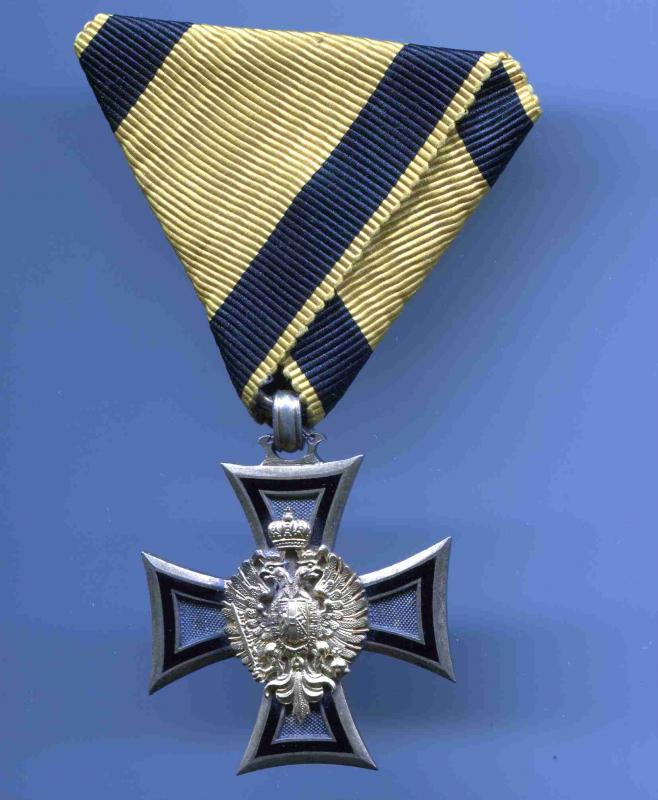 0
0 -
Hello
this ist may Alexander.
Typ 1 1881 - 1886
Paris
Hi Paris
Is that a Russian or German made Saint Alexander ? Can you show the bar if not too much trouble.
Thanks.
Sincerely
Yankee
0 -
What is really needed here, is for this piece to be compared to a known original with a known provenance. Either another private owner or a museum.
As for myself -like the post-revolution Anastasia story- I want to believe.
Funny you mention that quick fix in resolving this, one way or the other. Recently a respected member on this forum had given the Honor Cross a favorable review. He had the good fortune to examine the Brabant pieces that belonged to the Grand Duke in Darmstadt.
0 -
Tag Rudi
Das ist fantastisch
 Absolut ein sehr informativ buch. Uberraschung nichts gebt auf Ehrenkreuz 1 klasse.
Absolut ein sehr informativ buch. Uberraschung nichts gebt auf Ehrenkreuz 1 klasse.Viele danke.
Brian
0 -
Hi Chris
Rudi already knows my German writing skills has a lot to be desired. Unfortunately that small body of water called the Atlantic will make it difficult for a close examination. Since such a small amount were ever manufactured and even less awarded, safe to assume there was only one jeweler without the slightest variations since it was only awded for a few years? Any idea how many were manufactured in the 1st Class Honor Cross & 2nd Class Honor Cross? Thanks Rudi.
Sincerely
Yankee
0 -
-
Dear members
Here is the Honor Cross 2nd class, as I understand there are dangerous copies of this order. If anybody has the knowledge to comment on this one please do so. It has been in a private collection for about forty years. The quality is excellent and the blue enamel looks to be the correct shade to the orginal examples but still.... Thanks for any opinions in advance.
Sincerely
Yankee

 0
0 -
You truely have a fantastic research library
 . Its great to know that I have a verified recipient but never imagined 5 possibilities. Also surprised to learn that there were that many long sevice officers still serving at that time. Many kind thanks for all
. Its great to know that I have a verified recipient but never imagined 5 possibilities. Also surprised to learn that there were that many long sevice officers still serving at that time. Many kind thanks for allyour help.
Sincerely
Yankee
0 -
Hi Dave
I'm being optimistic that a member might have the schematismuses for 1917. There can't be too many career officers left in 1916 since they were decimated on the Eastern Front. Any idea where to retrieve info on the 35 IR? Excuse the previous poor foto, this should be better. Thanks
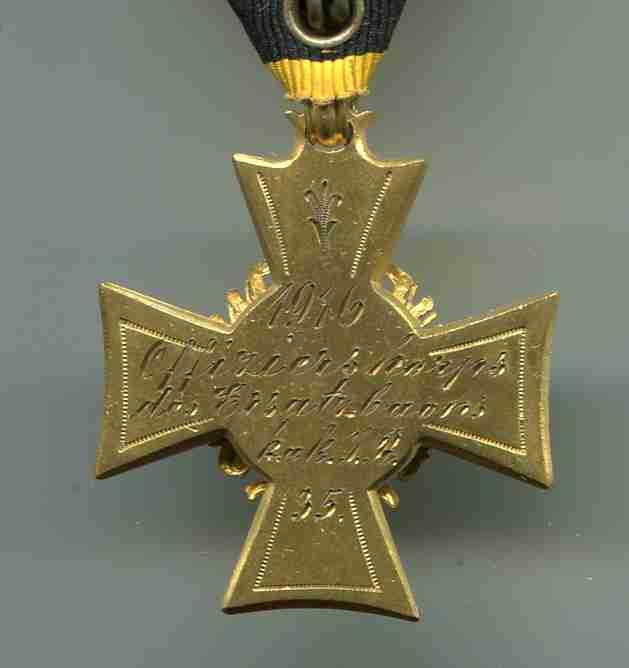
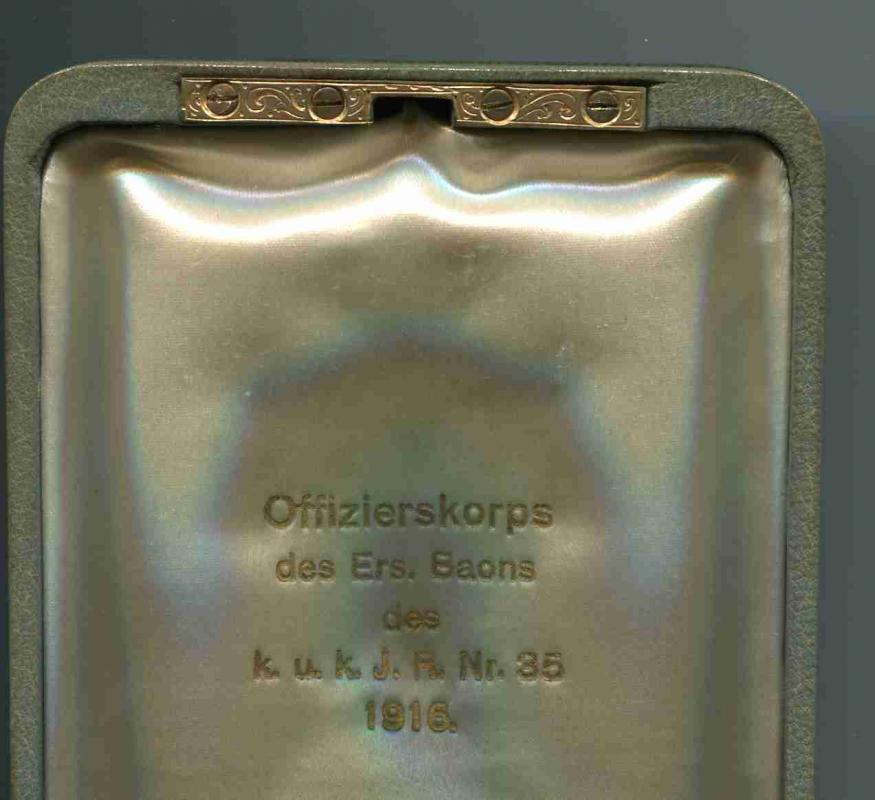 0
0 -
Can anybody name this Officer who received a 40 Year Decoration in 1916 who served in the 35 IR. Thanks in advance Yankee.
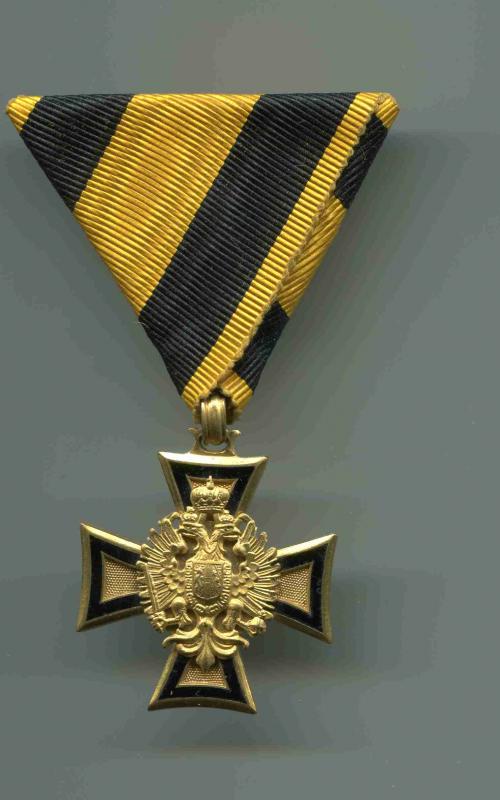
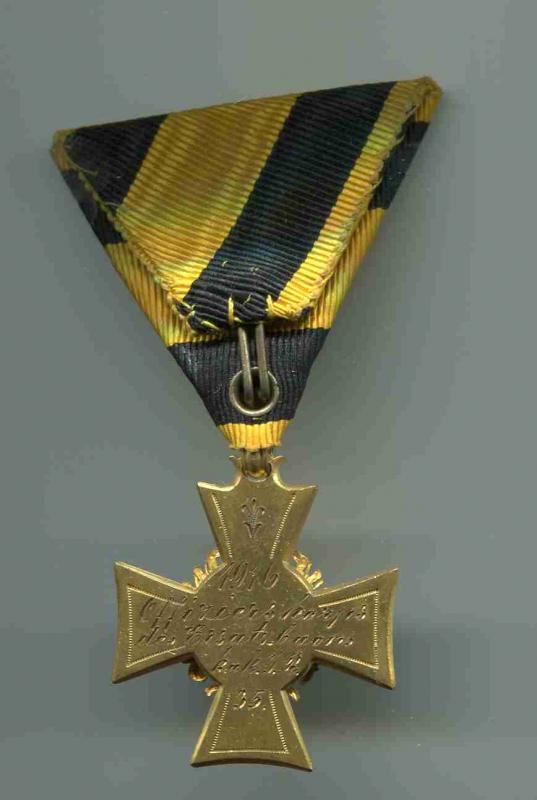 0
0 -
-
Well, it looks like this topic is ending in the shallows of breaking up medal groups, as it has been done for long, long times and still happens.
A relation or collector keeps a group together for sentimental/historical reasons, but as it is in real life, once sold greed or the market takes the upper hand.
Welcome in the world where most people know the price of everyting but value little.
What would you do, boycot these dealers for life, or in the long run buy their stuff because you are a greedy collector?
What's the price of principles?
Good point in wanting to boycot a dealer for life if its an item you can't find any where else. It is not just greedy & naive merchants that make a practice destroying bars but also collectors themselves who have no problem taking apart one for that desired medal to fit ever so nicely in their collection.
0 -
Dear GMIC Members
For most it is common knowledge that Oldenburg has an enormous amount of high quality fakes in circulation & a good many are being valued as orginals. In regards to the stars & officer class examples there is a simple step that will allow collectors to differentiate a good example from a bad one. All genuine Bernard Knauer examples should have his first initial B stamped as B KNAUER on the reverse.
Examples without the B and reads only KNAUER should be avoided & treated as post 1918 copies.
Sincerely
Yankee
0 -
Dear Gentleman
Can anybody say if the medals struck in silver were for dignitaries, special puchases or simply fakes?
In books only described as being issued in bronze. Must be a mistake I suspect.
0




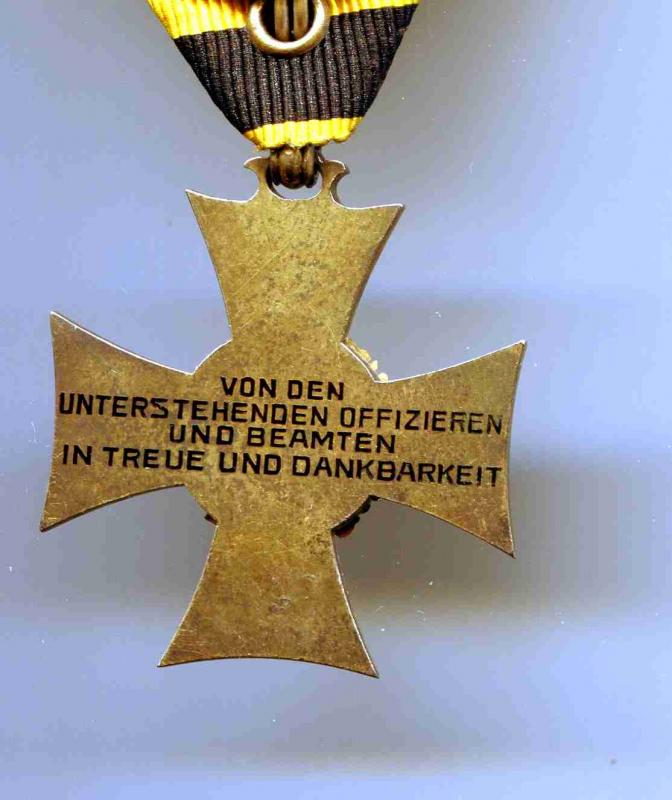
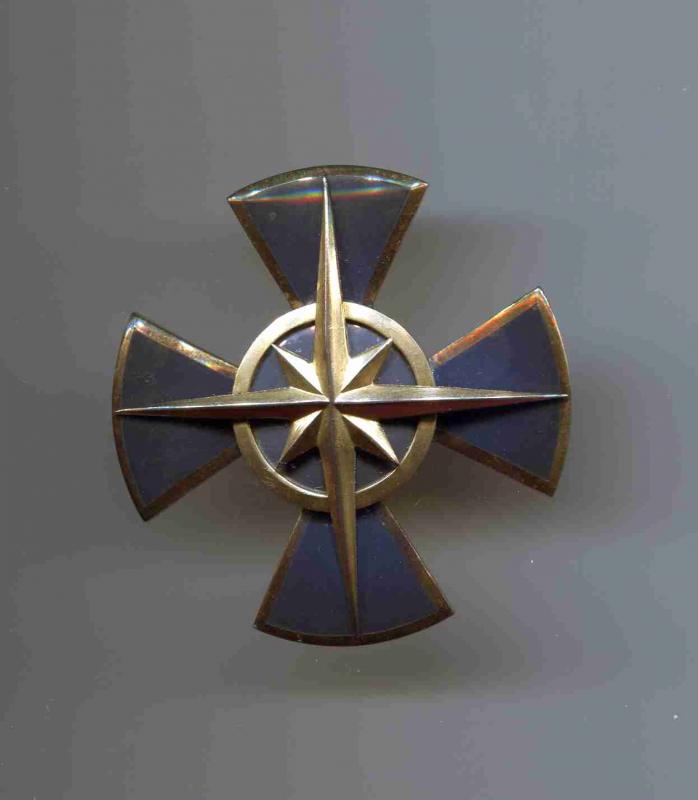
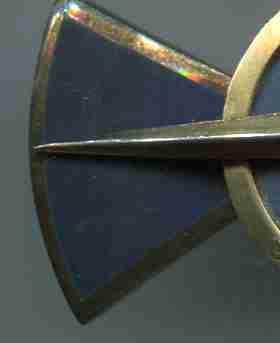
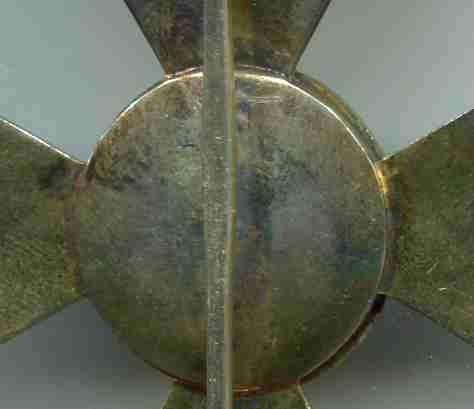
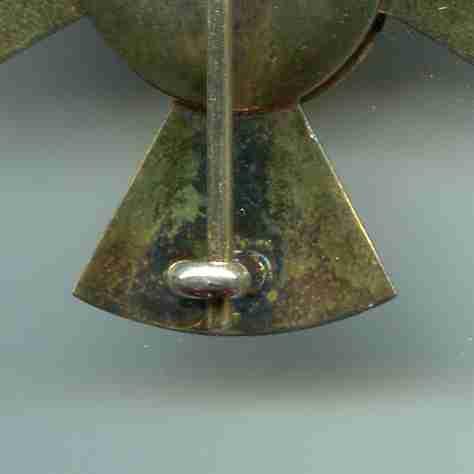
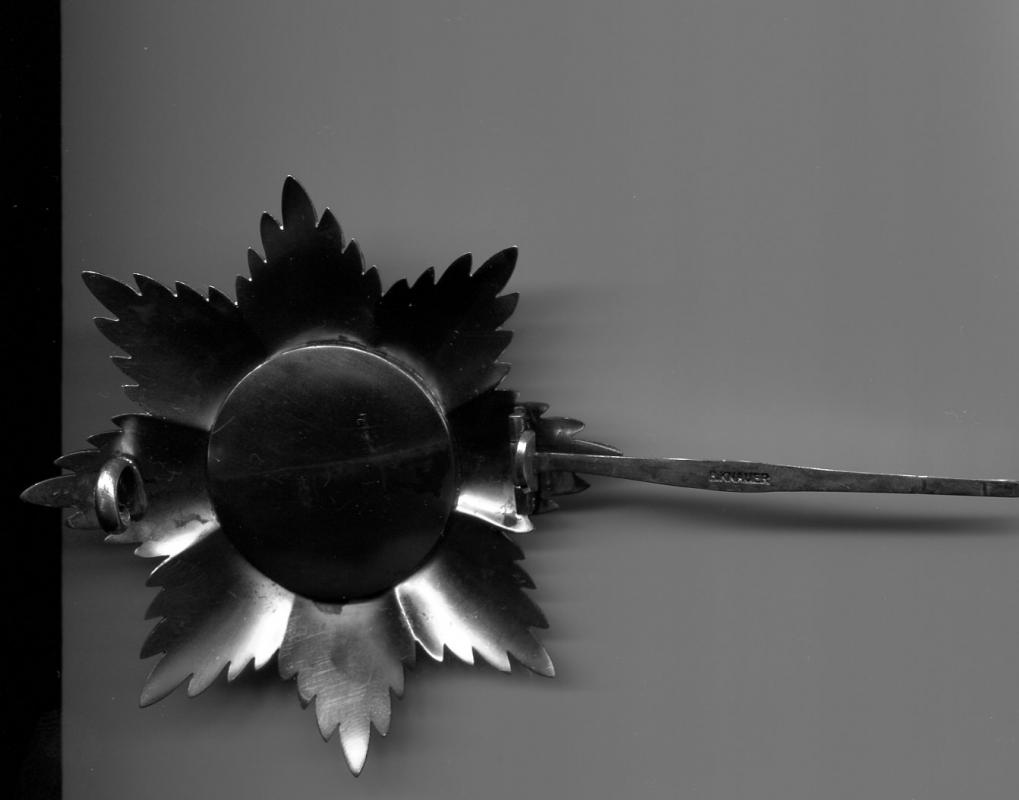
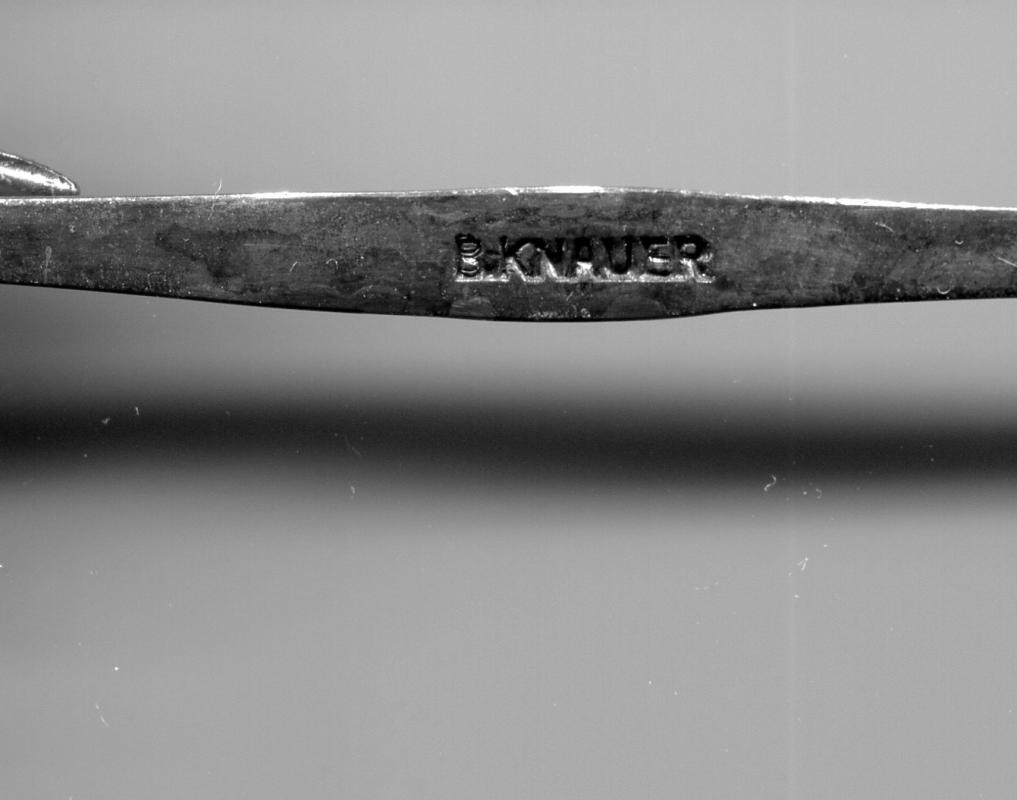
Order Saint Maurice & Saint Lazarus
in Southern European & Balkan States
Posted
A commander grade example taken from an 1848 plate.
Interesting to note the most ornamental ribbon ring, Perhaps added by the artist or are there known examples of this type...